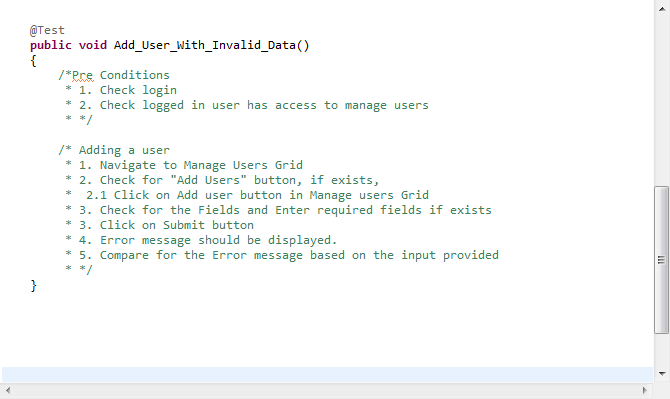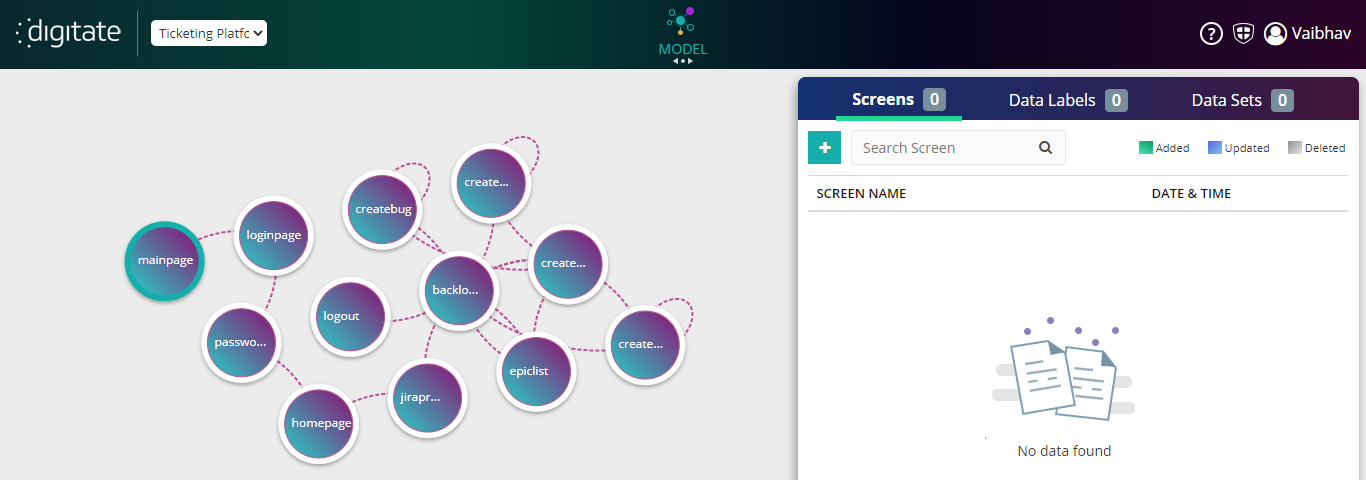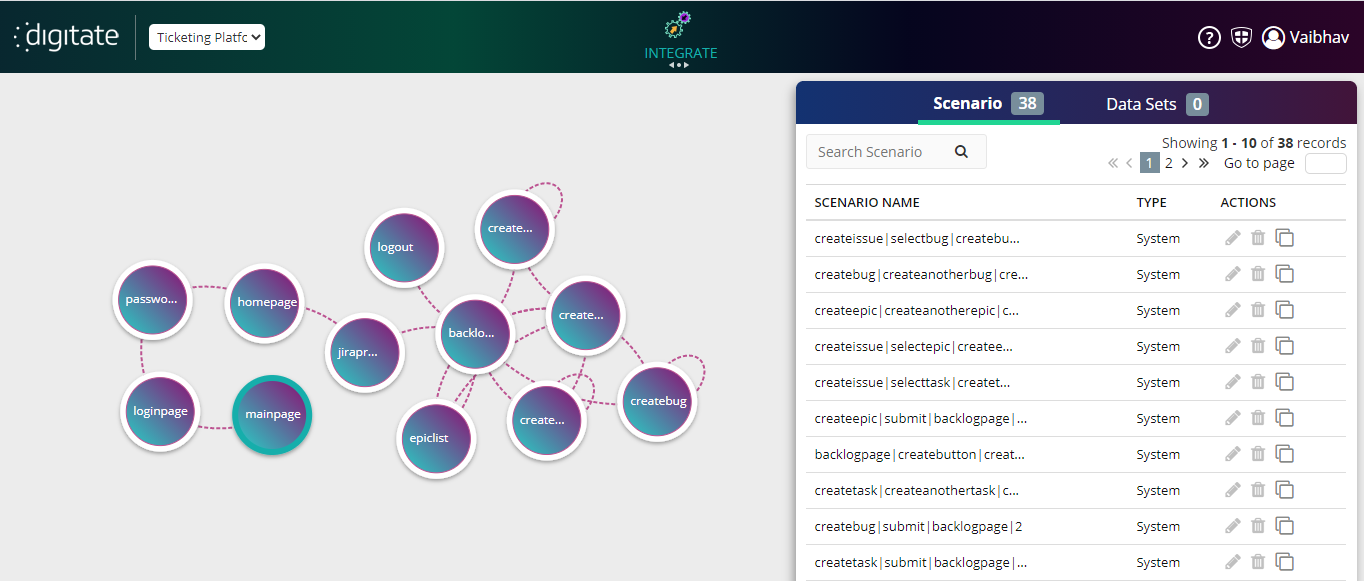Test Automation vs. Autonomous Testing

It would be difficult for organizations to retain the best possible customer experience while delivering faster products with traditional test automation approaches.
The software testing space saw a paradigm shift in testing methodologies from manual to test automation with the new technologies. Digitization certainly comes with benefits, such as increased productivity; at the same time, it also results in the complexity of applications. Fintech applications are the best examples of banking services to complex app-based applications. The challenge is to provide the most satisfactory customer experience on these applications and perform well. Software testing is the game-changer and will play a vital role in this fast-paced DevOps world. It would be difficult for organizations to retain the best possible customer experience while delivering faster products to the market with traditional test automation approaches.
Let's understand more about test automation and how it is inadequate in handling new age practices and customer expectations.
What Is Test Automation, and Why Is It Used?
Test automation is the practice in software testing that leverages automated testing tools to automate the execution of tests, manages test data, and utilizes results to improve software quality.
When testing software (on the web or desktop), we usually use a mouse and keyboard to perform our steps. Automation tools mimic those same steps by using scripting or a programming language, enabling the creation of an execution script.
Example of Test Automation
In case we are testing a new version of a calculator application, where the developer has added two new numbers. A QA tester would try two important test cases – first, check if the newly deployed features (new numbers) are working correctly, and second if the logic is working or has the desired impact on the application.
Let us see the manual step of testing.
Manual test-case generation steps:
<!--[if !supportLists]-->1. <!--[endif]-->Launch Calculator app.
<!--[if !supportLists]-->2. <!--[endif]-->Press the 1st number (say 5), check the result.
<!--[if !supportLists]-->3. <!--[endif]-->Press the 2nd number (say 2), check the result.
<!--[if !supportLists]-->4. <!--[endif]-->Use both numbers to perform (say) an addition function and check for the results.
<!--[if !supportLists]-->o <!--[endif]-->Check 5 + 2, and the screen should display 7.
<!--[if !supportLists]-->5. <!--[endif]-->Close the Calculator app.
The equivalent automation script for the above test case is as follows:
C#
1
// This is an example of code written in C#.
2
[TestMethod]
3
public voidTestCalculator()
4
{5
//launch the application
6
varapp = ApplicationUnderTest.Launch("C:\\Windows\\System32\\calc.exe");
7
//do all the operations
8
Mouse.Click(button5);
9
Mouse.Click(buttonAdd);
10
Mouse.Click(button2);
11
Mouse.Click(buttonEqual);
12
//evaluate the results
13
Assert.AreEqual("7", txtResult.DisplayText,”Calculator isnot showing 7);
14
//close the application
15
app.Close();
16
}The above script is a language representation of all the above manual steps performed.
Test automation helps reduce the feedback cycle and helps retain the quality of software throughout the development. Test automation helps detect issues or bugs early on during the development phase and hence helps increase the team's efficiency.
How is Test Automation Done in Software Delivery?
An organization actualizes test automation with a system that incorporates standard practices, testing tools, and measures. Usually, software testers in organizations adopt a test automation framework- a mix of rules and guidelines and tooling for building test cases while improving the reusability of code, lowering the cost, and enhancing testing productivity.
Selenium is a widely known tool for test automation. Let us see how QA testers use Selenium.
Selenium is a suite of tools used widely by QA testers as it is free, open-source, and has unlimited test-automation capabilities. Most notably, it is used for cross-browser testing. It executes tests in a browser by using test scripts. Selenium IDE helps in recording the user interactions to build automated test scripts. It is a Firefox or Chrome plugin and was mainly developed to speed up the creation of test automation scripts.
Note: Selenium cannot automate desktop applications; it is only
limited to web-based apps.
After the Selenium IDE extension is installed in the browser, one can record
user interactions easily and convert them to a script.
Following is an example of a sample Selenium test automation script generated.

For applications where the deployments often happen multiple
times a week, recording and playing using Selenium or manual generation of
test-case will be tedious. Let us see the drawbacks of test automation in
detail.
Drawbacks of Test Automation
<!--[if !supportLists]-->1. <!--[endif]-->Writing the
test automation scripts requires a high degree of skill and domain expertise.
Proficiency in a programming language, mastery of test automation tools, and
understanding of business requirements are skills and domain expertise needed
to write flawless test automation scripts.
Usually, there is a high dependency on test automation engineers to generate
the scripts and can be replaced only by a person with a similar set of
expertise.
<!--[if !supportLists]-->2. <!--[endif]-->Debugging
the test script is a major challenge. Any error in the test script would result
in a negative business impact.
For example:
QA testers must have deep application knowledge in creating test scripts. It
can be difficult for a QA tester to debug and improvise test scripts with
rapidly changing applications.
Another example can be while performing data-driven testing; it takes QA
engineers a lot of time as it involves a large amount of coding in the test
scripts.
<!--[if !supportLists]-->3. <!--[endif]-->Test maintenance can become a costly and time-consuming process in the case of playback methods or record and playtest. A minor change in GUI the test script needs to be recorded again and then replaced by a newly designed test script. QA testers will burn out in these cases.
<!--[if !supportLists]-->4. <!--[endif]-->It is challenging to maintain test data files if the test script involves more screens and changes frequently. Creating test scripts and test data becomes extremely difficult with the increased size, complexity, and nature of the application. If any change is made in the application, changing the test script and test data becomes a tedious task. In the worst cases, say the application is complex, it can take days for a QA engineer to regenerate the test script and test data. Besides, there is no guarantee if the generated test case will span all the possible testing scenarios.
Introducing Autonomous Testing
Autonomous Testing can create a test suite (test scenarios and test cases) autonomously without human intervention. However, independent testing is not restricted to creating test suites; it involves autonomous test case design and test execution too. Autonomous Testing helps make faster decisions in choosing a scenario to test under various circumstances.
Autonomous Testing significantly reduces testing applications by leveraging modern AI/ML techniques. It will only be fair to say that Autonomous Testing is one step ahead of test automation.
Benefits of Autonomous Testing
- Reduction of software failure risk with early bug detection using impact and root-cause analysis. Faster testing with an autonomous generation of test scenarios and test automation scripts.
- Automatic self-healing of test scenarios and test automation scripts when application undergoes any change.
- Increased productivity with a faster development life cycle, faster product release, and less time to market.
- Reduction in cost of testing with automatic identification of test scenarios and data.
- Smarter resource allocation and increased productivity per resource; since there is no requirement for skillset, expertise, or huge dependency as in the case of test automation.
Framework for Autonomous Testing
An autonomous testing framework ensures that minimum human intervention is required in the software testing process.
Generate Application
Blueprint: An application model (blueprint) should be generated by scanning
the complete application using ML algorithms.

Generate Test Cases and Test Scenarios: After the application blueprint is created, test scenarios and test cases are generated for this application based on the flow or page navigation of how the one service is connected.

Autonomous testing tools such as ignio AI.Assurance captures all the underlying screen properties and labels and connects the field type to the action library (built-in), thereby ensuring that the dataset is created autonomously. The automation script is automatically generated by further utilizing the test scenarios, data set, and screen properties.
ignio AI.Assurance is an autonomous assurance product that enables enterprises to deliver better software faster, ensuring more substantial brand value. Its prominent features such as autonomous test suite generation, self-healing of test suites, intelligent test selection, and insightful dashboards help achieve the perfect cost, quality, and time equilibrium in software development.
Conclusion
With DevOps and the Shift Left approach, Autonomous Testing plays a significant role in enabling continuous testing right from the beginning of the SDLC process. With testing, enterprises can achieve the autonomous generation of test scripts and test scenarios and automated self-healing of automation scripts, change impact, and application defects. Using Autonomous testing, enterprises can reduce manual labor and scale up their business by focusing on innovation and adapting to newer business and IT requirements.
Relevant Blogs:
SRE vs. Platform Engineering: The Key Differences, Explained
GitOps Best Practices for DevOps Teams
Infrastructure as Code: Everything You Need to Know
Recent Comments
No comments
Leave a Comment
We will be happy to hear what you think about this post